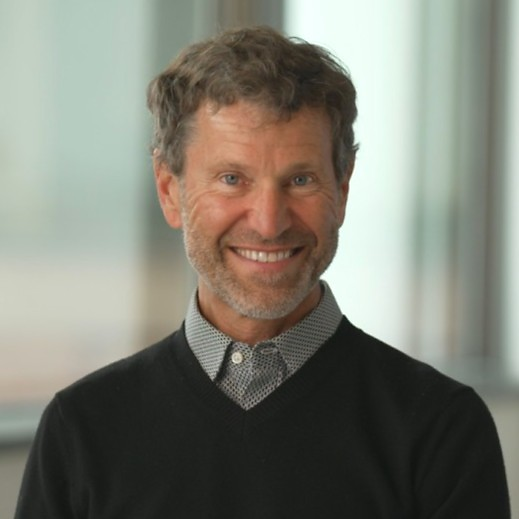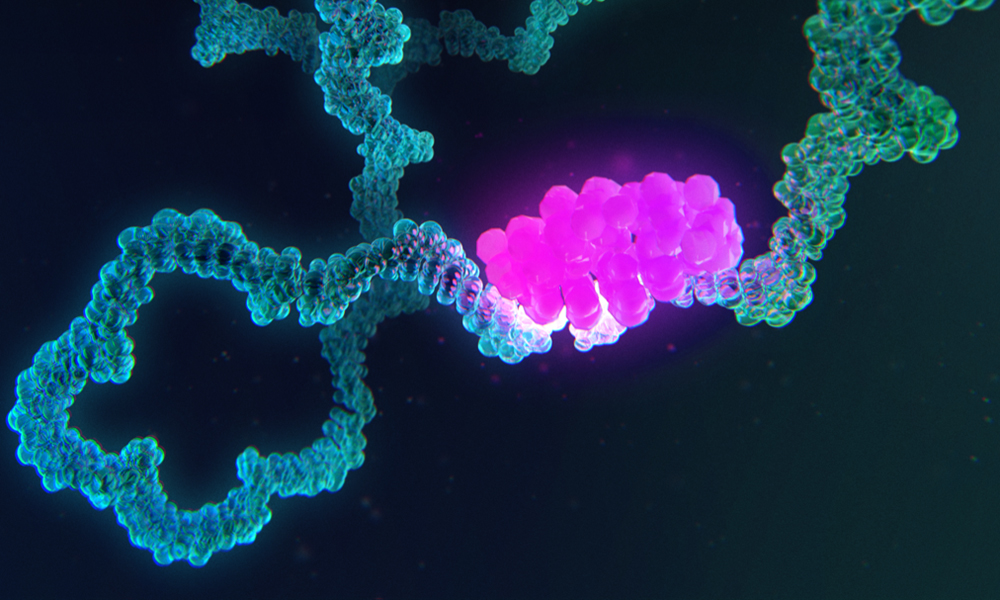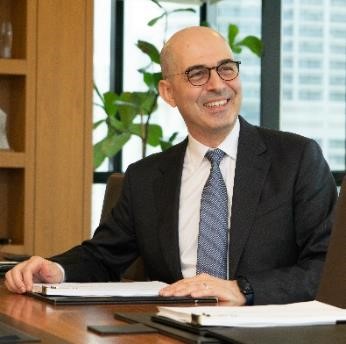Q&A with Diego Miralles, Chief Executive Officer, Laronde, on its ground-breaking protein therapy program.
Laronde was founded in 2017, by Flagship Labs, the innovation foundry of Flagship Pioneering. It is developing a platform that offers a completely novel way of modulating human biology. Endless RNA™ (eRNA™), is a uniquely engineered RNA that can be programmed to express diverse therapeutic proteins inside the body. It is persistent, non-immunogenic, allows for repeat dosing, and offers flexibility in formulation and delivery.
In August 2021, the JIMCO Life Sciences Fund, the venture and innovation fund specializing in biotech and part of JIMCO the Abdul Latif Jameel Investment Management Company and the dedicated investment arm of the Jameel Family, participated in Laronde’s Series B funding round to advance the development of its eRNA™ platform and a broad pipeline of programs across a number of therapeutic categories. The Company is rapidly scaling to support the parallel development of multiple programs across many disease areas.
We spoke to Diego Miralles, Chief Executive Officer, Laronde, and Akram Bouchenaki, CEO Abdul Latif Jameel Health and an adviser to JIMCO, to discuss Laronde’s groundbreaking technology and how it fits in with JIMCO’s fast-growing portfolio of advanced healthtech innovators.

Diego Miralles MD
Chief Executive Officer, Laronde & CEO-Partner Flagship Pioneering
Q: Can you explain the background to Laronde and its mission?
DM: Laronde is the dream of exogenous protein manufacturing realized.
What does that mean?
Well, proteins are the tools of life. They enable communication between cells and exert all functions that lead to life.
Proteins are made in cells as part of the flow of life: from DNA (Deoxyribose Nucleic Acid) to RNA (Ribose Nucleic Acid) to proteins.
We have figured out over the years how to make proteins outside the body – that is, exogenously – and then give them to patients to help their bodies respond to certain conditions and illnesses.
These are called therapeutic proteins, from things like peptides and hormones, which are tiny but very potent, to larger things like monoclonal antibodies. There are literally thousands of therapeutic products based on proteins that are made exogenously in the lab.
We use Ribose Nucleic Acid or RNA to instruct cells to make a protein with the characteristics we want for that particular therapy.
This type of RNA is called ‘messenger RNA’, or mRNA, because it is literally a messenger – it gives the cell a ‘message’ to produce a specific kind of protein.
The problem is, once it’s given the cell that message . . . it’s gone.
In the past, we used gene therapy, which is DNA-based, to express the protein for a long time, essentially permanently, but gene therapy has its own challenges and risks. Then came messenger RNA, which can express proteins for a very short period of time. Now we have eRNA™, which sits somewhere in the middle.
If we want the cells to make more protein, we need to send in more messenger RNA.
This isn’t a problem if you only need to have an expression of protein for a short time, like three or four days. But if you have chronic conditions that need to be managed, like type 1 diabetes, or say, hemophilia, for instance, where you need to have a coagulation factor at a certain level expressed in your body for the rest of your life to stop you bleeding, messenger RNA doesn’t work so well because it is so short term.

Artist impression of circular or ‘endless’ RNA engaged with a ribosome in the cell producing a protein. Image credit: © courtesy Laronde Inc.
What Laronde has developed is a new kind of RNA, called endless RNA™, or ‘eRNA™’. eRNA™ is a ‘closed loop molecule.’ This means it is literally like a tiny loop, and the ‘message’ it carries is contained within that loop.
So instead of giving the message and then breaking down, like regular RNA, the loop keeps turning and as it turns it keeps on giving the message to the cells, so the cells keep on producing protein and more protein and more protein, for a much longer time.
It could be weeks or even months.
Q: What benefits does this deliver to patients?
DM: The benefits are mainly around dosage frequency and scale. Because eRNA™ keeps on telling the cells to produce protein. A patient could be re-dosed much less frequently than with current treatments, perhaps once every 3-6 months, depending on the protein being expressed. With regards to scale, when you give a regular exogenous protein, you have a certain number of molecules. You are not making any more of those molecules. They last for a while, and they break down.
In contrast, eRNA™ has a multiplying effect. Every time it goes round, it makes another new protein. So, a few micrograms of eRNA™ can produce many milligrams of that protein over its lifetime, so it has a huge amplifying effect.
In essence, the patient becomes his or her own protein factory.
Q: Are there particular types of therapeutics or treatments that this technology is particularly suitable for?
DM: Anything a protein can do, eRNA™ can do, because we can encode it for any type of protein. So, there is not really a particular therapeutic area that is a better fit for eRNA™. It can be applied across all therapeutic areas.
Proteins are basically made up of chains of amino acids. If it has less than 50 amino acids, we call them peptides. If it has more than 50 amino acids, we call them proteins. We’ve been able to make the whole spectrum, from peptides that have ten amino acids to proteins that have 2,000 amino acids, across all different types of proteins.
In fact, one of the strategic challenges we face is, given that eRNA™ has such as a wide range of potential applications, where should we focus our initial programs and what should be the sequence of those programs? As we say that at Laronde, ‘We can do anything, but we cannot do everything, so we need to figure out what to prioritize.’
Q: Notwithstanding the vast scope of potential applications, could you suggest some common conditions that eRNA™ could help to treat?
DM: eRNA™ technology is ideal for longer term therapies. Hence, things like diabetes, obesity, neuropsychiatric conditions, coagulation disorders, enzyme deficiencies, intracellular enzyme deficiencies to applications of therapeutic antibodies, to receptor engineering, and these are just applications of existing products. If you move into new biology, into intracellular proteins and intracellular antibodies to modify disease biology like in cancer, being able to express proteins inside cells gives us a whole new set of tools to be able to modify biology using intracellular proteins and antibodies.
Q: How close is this technology to commercialization?
DM: We’ll be in the clinic in 2023. We are focusing our efforts on building the platform. Most companies only grow after their first product, because they don’t want to get too far ahead of themselves in case things don’t work out.
Flagship Pioneering doesn’t do that. We build platform companies because we feel the largest value of the company is in the platform. We bet on success and we build the platform and the infrastructure upfront. So, we are not defined by the value of one product, but by the value of the platform as a whole, enabling the demonstration of all the applications of the platform.

Artistic rendering of an RNA-binding protein interacting with an RNA molecule. (Photo Credit © Campbell Medical Illustration Ltd.)
Q: How significant is this technology from a medical point of view?
DM: eRNA™ is a new class of medicines, just like antibodies were a new class of medicine more than 30 years ago. The 100th antibody was approved this year, so we’ve created a hundred antibody products over a 30-year period. I have no doubt that eRNA™ is going to have a similar impact. We’re going to have hundreds of eRNA™ medicines in the future.
One thing that is important for us as a Company, and which I think really connects with the mission of Abdul Latif Jameel Health, is that in spite of the fact that antibodies have been around for more than 30 years, no more than a billion people on the planet could ever have access to an antibody. This means there are seven billion people that will never have a chance to receive an antibody, even after 30 years of development.
That’s not right. It tells you there are problems of access in terms of the new technologies that we make. This is a huge part of our mission and our purpose at Laronde: we want to make sure we are creating a new class of medicines that is available to all eight billion people in the world, not just the lucky one billion.
Q: Akram, building on what Diego has said, how does Laronde fit into the vision of the JIMCO Life Sciences Fund and, more

Dr. Akram Bouchenaki
Chief Executive Officer,
Abdul Latif Jameel Health
broadly, of Abdul Latif Jameel Health?
AB: There are several layers to the answer. There is a historical relationship between Abdul Latif Jameel and Flagship Pioneering, which has existed for a number of years and is very important. Over the last couple of years, through this COVID crisis and the success of the Moderna vaccine, Flagship has demonstrated to the world that innovation can have a massive impact on global health.
I’ve been in this industry 30 years now, and for an innovation to impact the world in such a short amount of time is quite unheard of.
As you’ve heard from Diego, there is huge alignment between the visions of Laronde, JIMCO Life Sciences Fund and Abdul Latif Jameel Health. Abdul Latif Jameel Health was conceived to be an accelerator for getting breakthrough healthtech to market swiftly and effectively, particularly for markets that have historically been largely underserved, like the global south.
Laronde fits into that context perfectly.
It is a potentially revolutionary innovation that could open so many doors. That’s a huge part of the appeal for Abdul Latif Jameel Health, too.
Q: As CEO of Abdul Latif Jameel Health, how closely do you work with JIMCO Life Sciences Fund on new investments like this?
AB: We’re extremely aligned with the JIMCO Life Sciences Fund team. We work hand in hand. We sit on the same committees and we make decisions jointly. So, there is complete alignment between JIMCO and Abdul Latif Jameel Health.
One thing we really appreciated in Laronde’s approach is the speed of innovation. Getting the first candidates into clinics in 2023, is remarkably fast. Generally, there are several barriers to access innovation in medicine. The first is cost, of course. Cost is always a big issue. But the second is time. It can take decades for new products and innovations to come through, and in the meantime, people continue to suffer. Given this backdrop, it really is very exciting when a new class of products is developed at high speed with high efficiency.
Q: Diego, how important is it for you to have investors who understand your visions and are in it for more than profit alone?
DM: Certainly, we want to work with people that share our vision, which is not only about financial success, but also about impact

“We’re building the plane while flying it!
Fred Key performs in-flight maintenance “Ole Miss.” Appeared in the EAA Vintage Aircraft Association’s newsletter.
and access. This is a message we share with all our investors. One of the many advantages of having JIMCO Life Sciences Fund as an investor is that it helps expand our global reach.
Ultimately, we will have products that need distribution in different geographical areas, and JIMCO and Abdul Latif Jameel Health could be great partners for that.
Q:What are the priorities for both of you over the next few months?
DM: Our priority is to continue building the Company.
The science is amazing and it’s very reproducible. The biggest challenge for the Company is execution.
Getting the right people on board and helping us nail down the priorities: building the infrastructure, building the production and manufacturing capabilities that enable us to realize our vision.
These are not easy things to do. It’s like building the plane whilst you’re taking off. This hasn’t been done before. It’s really exciting, but it’s all new and we have to learn as we go along in the best way we can.
AB: We are building a plane at Abdul Latif Jameel Health, too, but we are building it while we fly it!
We are in the middle of launching a number of innovations in many countries, with different partners, hiring the teams to help us do that, and so on, so I totally understand what Diego is saying. On the investment side, we’re embarked on an exciting journey. Laronde is one of the first investments we have made, and we look forward to making many more. This is a journey we’re starting with great ambitions for the future.
Related Insights
























